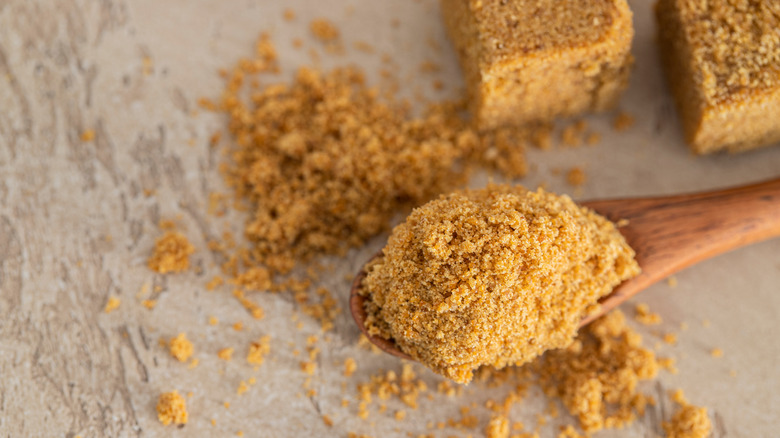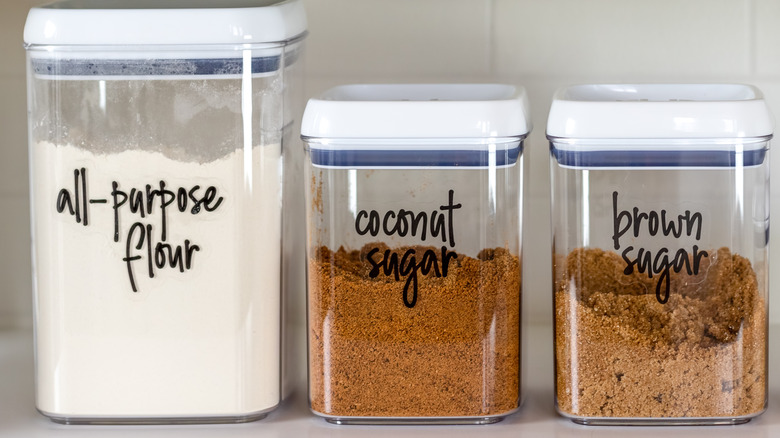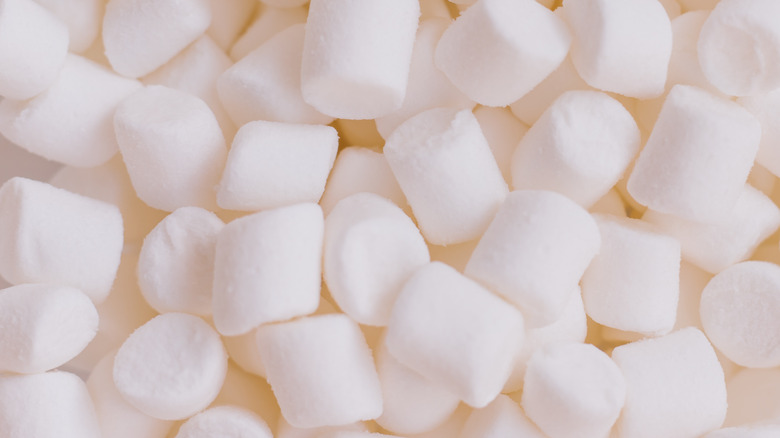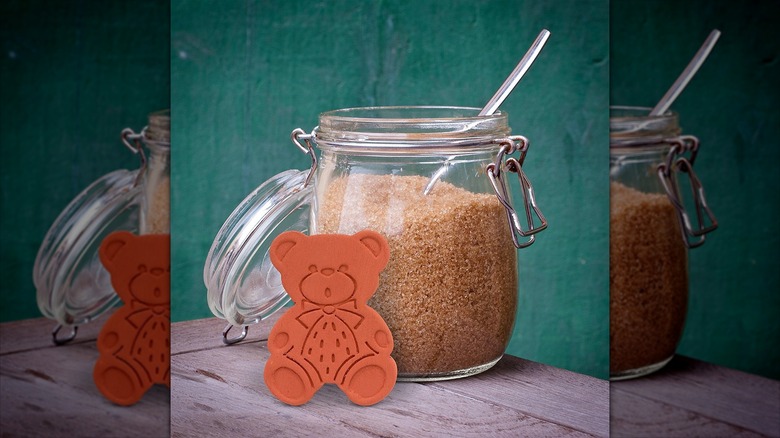The Absolute Best Ways To Keep Brown Sugar Soft
We may receive a commission on purchases made from links.
Folks have been jamming out to "Sugar, Sugar" by cartoon band The Archies since 1969, and there's a reason.
Sugar is the home baker's bread and butter (or, you know what we mean), and its richer cousin — brown sugar – can be an even sweeter fit for your pastries. Brown sugar's savory dimensionality can level-up the all-purpose sweetener you stir into your coffee. No brown-butter banana bread or cinnamon flop cake would be complete without it. And it isn't just for baked goods: Brown sugar can even transform dishes as unlikely as chicken salad.
The bad news is: clumping. It's infamous for solidifying while your head is turned. Brown sugar is prone to hardening because of its basic ingredients: It's made from coating white sugar in molasses, says Heathline. The molasses makes brown sugar slightly higher in iron, calcium, and potassium than white sugar, but it also makes it a lot stickier. As the molasses is exposed to air, per Epicurious, it dries out and causes your brown sugar to clump and cement together.
Luckily, there are several ways around the dreaded brown-sugar-brick, and most of them use tools you probably have lying around.
In an airtight container
Popular confectioner Domino Sugar recommends storing brown sugar in a cool, moist area in an airtight container. This might seem counterintuitive, since most ingredients in the kitchen require a dry area to retain their freshness and prevent mold, but not brown sugar. In fact, per Domino, it's important to make sure to pick a rust-proof storage container, so your brown sugar's natural moisture doesn't corrode it. Opt for plastic over metal. (There are even containers on the market specifically designed for keeping your brown sugar moist, like this one from Bed Bath & Beyond).
The good news is brown sugar doesn't technically expire. Does It Go Bad explains that because brown sugar doesn't support microbial growth, bacteria cannot naturally survive in a container of the stuff. Unless rodents or insects have somehow found their way in, or an excess amount of moisture is pooling in your brown sugar, it says, you're safe. Still, for optimal freshness, it's best not to cut corners: Pour that brown sugar out of the grocery store plastic bag and into an airtight container.
With bread, marshmallows, or apples
If you don't have an airtight container handy, try the next best tool: a plastic bag. Resealable plastic bags are a tried and true method of keeping ingredients fresh. But, consider stuffing your bag with this extra ingredient that might seem ... unusual. For soft brown sugar, Food Network suggests keeping a slice of bread in the bottom of the bag. Seems bizarre? Bear with us.
The bread, it says, will add just enough moisture to keep the molasses from drying out, and the symbiotic balance of wetness-to-dryness with the brown sugar will prevent the bread from molding. A study by R. A. Knight, J. B. M. Coppock, and Margaret C. Vaughan in the International Journal of Food Sciences and Nutrition found that white bread has an average moisture content of 37.5 %, via Research Gate. Since mold requires a moisture content of at least 60% to grow, according to the EPA, you're clear to slide that slice right in the bag.
For gluten-free folks, there are other options. According to The Kitchn, a handful of apple slices will work too. Or, per Food 52, marshmallows have the same effect. All ingredients have enough natural moisture to keep your brown sugar soft.
With a terra-cotta bear
Terra-cotta might be a surprising method of keeping brown sugar soft, but it's a classic home baker trick. Terra-cotta is a porous clay that takes on an organic red-orange color when fired; The word "terra-cotta" translates to the Italian "baked earth," via Britannica. Its natural porousness makes it an apt material for retaining water. To make terra-cotta work for your brown sugar, simply soak the disk thoroughly in water, wait for it to dry out, then place it in your brown sugar bag, per Stonewall Kitchen.
These terra-cotta Brown Sugar Bears keep their moisture for up to six months. Kitchenware retailers typically sell terra-cotta disks for around $5 (like these ones from health-foods purveyor Vitacost) making them a cost-effective solution to fossilized brown sugar. Plus, since these terra-cotta sugar savers can be reused over and over again, generate zero byproduct, and only require water to function, they also rack up extra points for sustainability.



